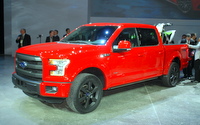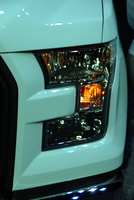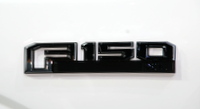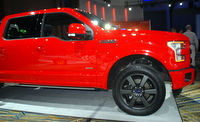New Aluminum-Intensive F-150 Pickup Leads the Way

The North American International Auto Show (NAIAS) aka the Detroit Auto Show is where the best and brightest, the newest ideas in cars and trucks appear first. It’s the big stage, and the 2014 NAIAS stage had many stories, but the biggest was that of Ford’s reinventing of its best-seller, the F-150 pickup.
The significance of Ford’s announcement of its aluminum-intensive 2015 F-150 should not be underestimated. Ford presented them as a “challenge to the industry.” This truck has been the best-selling vehicle in the U.S. for 32 years and the best-selling pickup for 37. It is the cash cow of the Ford franchise, bringing in the lion’s share of profits when the company is making money and helping keep it from sinking when times are tough.

As Doug Scott, the Ford Truck Group Marketing Manager, said of the significance of the aluminum move: “It applies to all models, all powertrains.” The weight-loss program should result in fuel economy improvements across the board for all Ford trucks (Ford hasn’t released official EPA numbers). That, in turn, should help them competitively.
Recent ads from its main competitor, the Chevy Silverado, claimed the Chevy pickup’s V-8 turned in better fuel economy than Ford’s V-6. And Ram is introducing a light-duty diesel that should boost its fuel economy.
How Will the Market Respond?
In addition, truck buyers are thought to be conservative, traditionally oriented purchasers more interested in something tried and true (like a perennial best-selling truck) than anything different from what they expect.
Ford began challenging those market assumptions in 2011 when it introduced a turbocharged direct-injection V-6 EcoBoost engine as the preferred engine for their pickup, challenging truck buyers’ tried-and-true preference for V-8s. They’ve had some success and the new version of the pickup will add a brand-new 2.7-liter EcoBoost V-6, scaling down things even more and doubling the EcoBoost options. Ford said they expect this graphite iron block engine to b the most popular of the four engine options since it will deliver V-8 power with better than V-6 fuel economy and also will employ Ford’s Auto Start Stop technology. But the 2015 aluminum-intensive truck is arguably an even bigger challenge to sell to truck buyers used to a steel-encased truck for their work.

Ford has done something no one else has been able to do in a mass-produced vehicle – take significant weight (up to 700 pounds, varying from model to model) out of a vehicle. That weight reduction, which comes both from the switch to aluminum in the body (450 pounds) and high-strength steel in the frame (60 pounds), enables other weight-saving moves such as being able to use smaller, lighter engines to do the same (or even more) work in a truck that probably will still weigh in at more than two tons. They have been working with aluminum since the 1970s, although this is clearly the biggest engagement with the metal they (or anyone else in the auto industry) has ever attempted, making it a central part of a vehicle so popular that one is sold every 41 seconds.
What F-150 Chief Engineer Pete Reyes said, they have learned things over the years and learned even more during the three-year development process of this truck. One thing they found is that they could upgrade the gauge of the aluminum from their original specs without compromising the weight savings, resulting in a more durable body and bed.
Like Chrysler with its minivan franchise, Ford has been leveraging its massive installed base to pull ideas for improvements to the F-150 for years. But those are the sort of changes that result in incremental improvements and tend to keep a segment leader ahead of the pack. What Ford has done here is no incremental improvement. It’s also unlikely that it came from a customer suggestion. Innovation comes from somewhere else. The 2015 F-150 shows that Ford has got the kind of moxie to keep moving a step (or more) beyond where everyone else might be. We’ll have to wait and see how the market reacts to the new truck, but the same market that has been signing on for EcoBoost engines will undoubtedly embrace the new lighter, but just as capable pickup.
Story & Photos By Michael Coates
Posted Jan. 22, 2014


5 thoughts on “Ford Sees the Way to MPG Though Lightweighting”